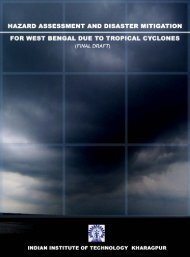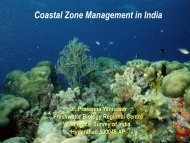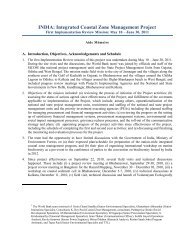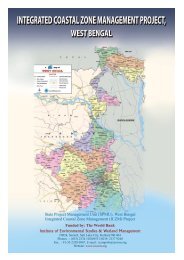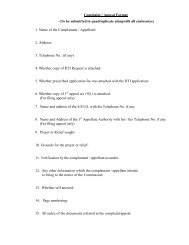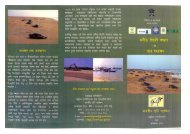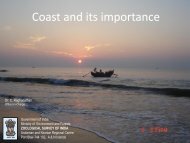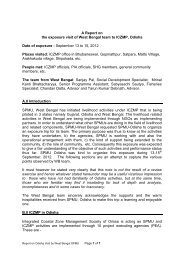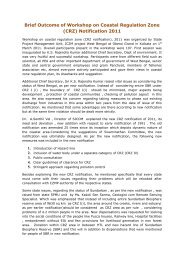integrated coastal zone management project west ... - Iczmpwb.org
integrated coastal zone management project west ... - Iczmpwb.org
integrated coastal zone management project west ... - Iczmpwb.org
Create successful ePaper yourself
Turn your PDF publications into a flip-book with our unique Google optimized e-Paper software.
18huge Ganges catchment. Pollution may be a direct source of mortality, but it may also reducethe health, increasing the mortality rate on the long term. Many products such as pesticideshave also been proved to reduce the reproductivity (birth rate) in animal populations. Afuture threat is the exploitation of mineral gas, which is likely to be found abundant in theunderground of the Sundarban.26. Some species that have become extinct during the last century are: javan rhinoceros(Rhinoceros sondaicus), water buffalo (Bubalus bubalis), swamp deer (Cervus duvauceli),gaur (Bos gaurus), hog deer (Axis porcinus), marsh crocodile, (Crocodilus palustris).C.2 Non-living ResourcesPlacer minerals27. There is no placer mineral deposit on and off shore part of the <strong>coastal</strong> <strong>zone</strong> of WestBengal.Minor Forest Produce of Sundarban28. Tree farming programme on private land, village wood lots as well as roadsideplantations and mangrove plantations raised on the mudflats of the numerous streams andrivers outside government forests help to meet the need of the local people for fuel wood andsmall timber, including building materials. The habitat shows evidence of excessive felling inthe past. Timber smuggling is still a threat to this Tiger Reserve. Honey collection on permitbasis is limited to the buffer area. Annually, about 38.2 MT of honey and 1.4 MT of wax arecollected from the SBR (based on 2006-07 figure).Tourism29. Digha in East Medinipur district is the only major tourist resort of West Bengal. Itreceives about 43% of the tourist flow of West Bengal. About a lakh of foreign and about 25lakh domestic tourists visit this <strong>coastal</strong> resort. Amongst the tourists, a large number are daytrippers belonging mostly to middle and low income groups. For these day trippers there isonly one facility at Digha (Khanika). Infrastructural facilities and civic amenities are limitedin Digha, New Digha and Sankarpur. Although there are a large number of budget hotels, staraccommodation are available one each in Digha, New Digha and Sankarpur. Old Digha hasbecome congested. The area does not have proper facilities for treatment of solid and liquidwaste. Coastal erosion and construction of structures to prevent <strong>coastal</strong> erosion has robbedthe Digha coast of its accessibility and natural beauty. Beach has also become dangerous in18






